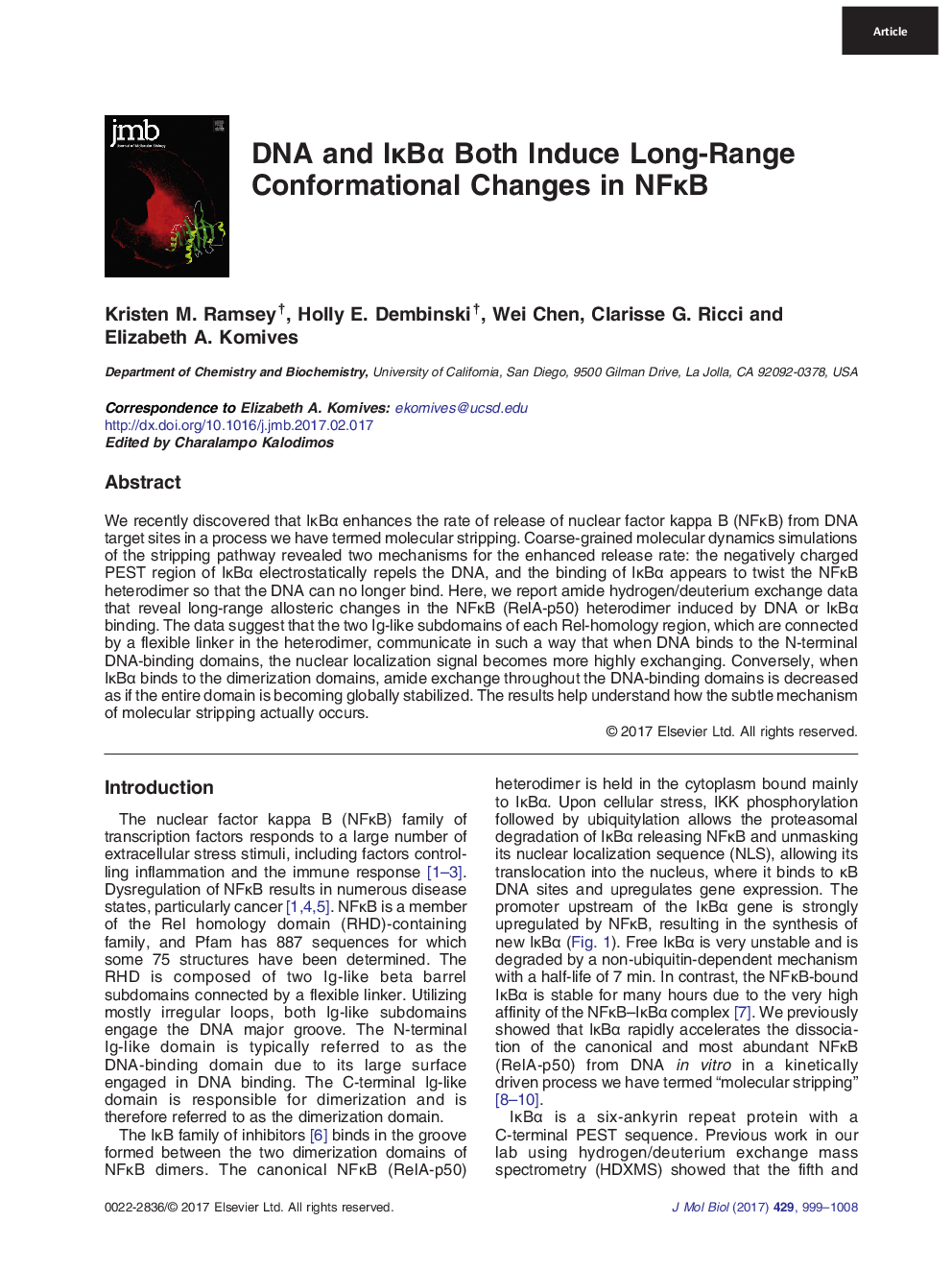| Article ID | Journal | Published Year | Pages | File Type |
|---|---|---|---|---|
| 5533122 | Journal of Molecular Biology | 2017 | 10 Pages |
â¢Discovery of allostery in NFκB that runs between the two Ig-like subdomains of the Rel homology domainâ¢DNA binding induces allostery in NFκB, exposing the nuclear localization signal.â¢IκBα binding induces allostery in NFκB, consolidating the N-terminal DNA-binding domains.
We recently discovered that IκBα enhances the rate of release of nuclear factor kappa B (NFκB) from DNA target sites in a process we have termed molecular stripping. Coarse-grained molecular dynamics simulations of the stripping pathway revealed two mechanisms for the enhanced release rate: the negatively charged PEST region of IκBα electrostatically repels the DNA, and the binding of IκBα appears to twist the NFκB heterodimer so that the DNA can no longer bind. Here, we report amide hydrogen/deuterium exchange data that reveal long-range allosteric changes in the NFκB (RelA-p50) heterodimer induced by DNA or IκBα binding. The data suggest that the two Ig-like subdomains of each Rel-homology region, which are connected by a flexible linker in the heterodimer, communicate in such a way that when DNA binds to the N-terminal DNA-binding domains, the nuclear localization signal becomes more highly exchanging. Conversely, when IκBα binds to the dimerization domains, amide exchange throughout the DNA-binding domains is decreased as if the entire domain is becoming globally stabilized. The results help understand how the subtle mechanism of molecular stripping actually occurs.
Graphical AbstractDownload high-res image (244KB)Download full-size image
